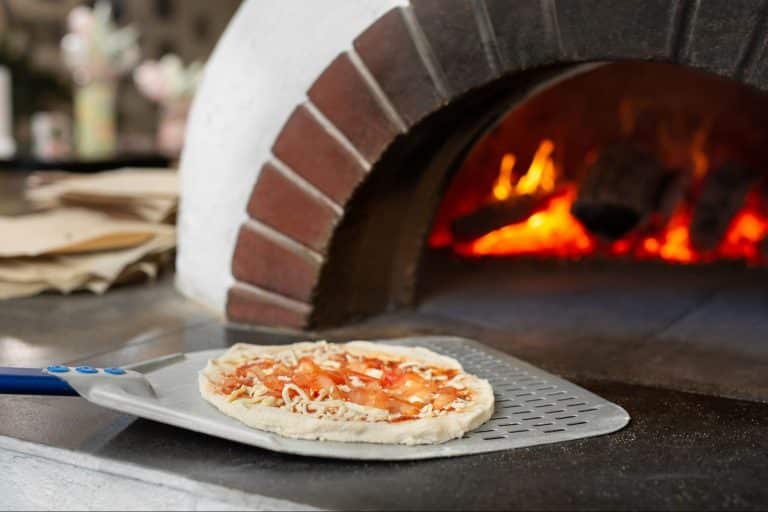Cold Smoking Cheese at Home: A Simple Step-by-Step Guide
Finding good smoked cheese at stores can be tough.
The store-bought kinds often lack flavor or cost too much for what you get. I, too, faced this problem until I learned how to make it at home.
I’m going to show you a simple way to cold-smoke cheese right in your backyard.
With just a few basic tools and some patience, you can make cheese that tastes better than what you’d find at specialty shops.
In this guide, I’ll walk you through picking the right cheese, setting up a cold smoker, the smoking process itself, and the critical aging steps that many people skip. Let’s get started making our delicious smoked cheese at home.
Why Cold Smoking is Ideal for Cheese?
Cold smoking works best for cheese because it adds flavor without heat. When cheese gets too hot, it melts and loses its shape, ruining both its look and feel.
Cold smoking keeps the temperature low, usually under 60°F. At this cool temperature, the cheese stays firm while soaking up the smoky notes from the wood. The smoke particles stick to the outside and slowly move into the cheese.
This method changes the taste of cheese without changing what makes it cheese. The milk fats in cheese grab onto smoke flavors very well, giving your cheese a new taste that you can’t get from a store.
The process works with the cheese’s natural makeup, bringing out hidden flavors that were already there. Your cheese will still taste like cheese, just better.
Selecting the Right Cheese for Cold Smoking
Not all cheeses work well in a smoker. The best picks have some fat content but aren’t too soft. You want cheese that can stand up for a few hours without falling apart.
1. Ideal Cheese Varieties for Cold Smoking
Cheddar tops the list for most home smokers. It has the right fat level and takes smoke well. I like both mild and sharp cheddar each gives a different result.
Gouda is another top pick. Its creamy texture soaks up smoke, making it taste rich. Smoked gouda goes great with fruit and crackers.
Monterey Jack is a good choice for those who want a milder smoked cheese. Its soft flavor lets the smoke stand out more.
Swiss, provolone, and Colby also smoke nicely. They each bring a unique taste that pairs with the smoke.
2. Preparing Cheese Without Wax Coating
Some cheeses come with a wax coating that blocks smoke. This must come off before smoking.
For gouda and similar wax-coated cheeses, use a knife to cut a small slit in the wax. Peel the wax off in strips until the cheese is fully bare.
Could you make sure to get all the wax off? Even small bits left on will stop smoke from getting into that spot on the cheese.
After taking off the wax, let the cheese sit for about 30 minutes. This dries the outside just a bit, which helps it take smoke better.
Cut your cheese into blocks about 3-4 inches each. Smaller pieces allow more smoke contact with the cheese. They also smoke more evenly than large blocks.
Tools Required
| Tool | Purpose | Quantity |
|---|---|---|
| Smoker or grill | Used for the smoking process | 1 |
| Smoking tube for pellets | Holds pellets and allows smoke flow | 1 |
| Torch or barbecue lighter | Used to ignite the pellets in the smoking tube | 1 |
| Tongs for handling the smoking tube | To safely handle the hot smoking tube | 1 |
| Knife for cutting cheese blocks | For cutting the cheese into blocks | 1 |
Materials Required
| Material | Purpose | Quantity |
|---|---|---|
| Hardwood pellets | For generating smoke, apple or fruit woods work best | 1 bag |
| Wire cooling rack | To cool down the cheese after smoking | 1 |
| Wax or parchment paper | For wrapping the cheese before storing | As needed |
| Zip-top bags or vacuum sealer with bags | To store the smoked cheese | 1 pack |
| Labels for marking cheese types | For identifying the different types of cheese | As needed |
| Semi-firm cheese (cheddar, gouda, etc.) | The main ingredient to be smoked | As needed |
Step-by-Step Breakdown
Step 1: Prepare Your Cheese

Cut larger blocks into smaller 3-4 inch chunks. This allows more smoke to get into the cheese. If your cheese has a wax coating like gouda, peel it off completely so that the smoke can reach all sides.
Step 2: Set up Your Smoking Area

Place the cheese on a wire rack for easy transport. Label each cheese type so you can tell them apart after smoking. Choose a cool day (under 60°F) to prevent any melting.
Step 3: Prepare the Smoke Tube

Fill the smoke tube with mild wood pellets, such as apple or pecan. Set it upright on your grill or smoker grates and light the top with a torch until it’s burning well.
Step 4: Start Smoking

Let the tube burn for 3-4 minutes, then blow out the flame. It should now smoke heavily. Use tongs to place it on its side in your smoker, keeping the open end toward the grill.
Step 5: Position the Cheese

Put your wire rack with cheese inside the smoker or grill. Leave space between the cheese and the smoke tube to prevent melting. If using a grill, keep the lid cracked for smoke flow.
Step 6: Smoke the Cheese

Let the cheese smoke for about 2 hours. You can rotate the pieces every 30 minutes if you want, though this is optional. The smoke tube will keep going without help.
Step 7: Rest and Wrap

Remove the cheese and let it sit uncovered at room temperature for about an hour. Then wrap each piece in wax or parchment paper and refrigerate.
Tips and Tricks
- The colder the day, the better for cold smoking (below 60°F is ideal)
- Use mild woods like apple or fruit woods to avoid overpowering the cheese
- Label your cheese before smoking; once smoked, different types look similar
- Rotate the cheese during smoking for more even smoke coverage
- The initial taste after smoking will be very strong; Aging is not optional
Video Tutorial
Check out this YouTube video for a detailed step-by-step guide for cooling smoke cheese
Pairing Smoked Cheese for the Perfect Flavor Experience
Learn how to boost your culinary experience by expertly pairing smoked cheeses with a variety of accompaniments, from fruits to wines and cured meats, for a rich and balanced flavor profile.
1. Crackers and Bread

- Plain water crackers let the cheese flavor stand out
- Whole grain crackers add a nice texture contrast
- A sliced baguette makes a good base for smoked cheddar
- Rye bread pairs well with smoked gouda
2. Fruits

- Apple slices bring freshness to smoked cheese
- Grapes offer juicy sweetness against the smoke
- Pear slices work well with milder smoked cheeses
- Dried fruits like apricots create a good flavor balance
3. Drinks

- Red wines like Cabernet match well with smoked cheddar
- Porter or stout beers bring out smoke notes
- Apple cider gives a nice sweet-savory mix
- Bourbon or whiskey can stand up to strong smoked cheese
4. Other Foods

- Nuts add crunch and fat that works with smoke
- Honey drizzle creates a sweet-smoky combo
- Cured meats like salami pair perfectly
- Pickles cut through the rich cheese flavor
Flavor Development After Aging
Freshly smoked cheese tastes harsh and bitter. The smoke sits mostly on the outside. After one week of aging, the flavor starts to mellow, and the smoke begins to move into the cheese.
In two weeks, the smoke flavor spreads throughout the piece, removing the harsh edge. The cheese now tastes smooth and complex, and you can taste both the cheese and the smoke.
The texture also improves with age. It becomes smoother and less grainy. The smoke flavor will continue to move through the cheese for months. Most people find 2-4 weeks ideal.
Some folks like to age their smoked cheese for up to 6 months.
This creates a very smooth flavor. The color of aged smoked cheese darkens slightly. This is normal and good. Each type of cheese develops differently. Cheddar gets sharper while gouda gets creamier.
Your patience pays off with better taste. The waiting is a key part of the process.
Conclusion
Making smoked cheese at home brings a whole new taste to your kitchen. The process takes time, but each step builds toward a better final product.
Cold smoking lets you control what goes into your food. You pick the cheese, the wood, and how long to smoke it. This control leads to better results than store options.
The secret lies in the waiting. Fresh smoked cheese tastes too strong, but with time, it turns into something special. The smoke moves through the cheese, creating a gentle flavor that works with, not against, the cheese itself.
Try different cheese types. Each one takes smoke differently and gives you new flavors to enjoy. Your friends will notice the difference between your homemade version and the regular stuff.
Frequently Asked Questions
1. What Is the Best Outside Temperature for Cold Smoking Cheese?
The best outside temperature for cold smoking cheese is between 40°F and 75°F (4°C-24°C), with cooler temps being better.
2. What Is the Best Wood to Cold Smoke Cheese?
Mild woods like apple, cherry, or maple work best for cold smoking cheese, giving it a gentle flavor without being overpowering.
3. Can you Cold Smoke on a Pit Boss?
Yes, you can cold smoke on a Pit Boss by using a smoke tube or tray and keeping the temperature below 90°F.







